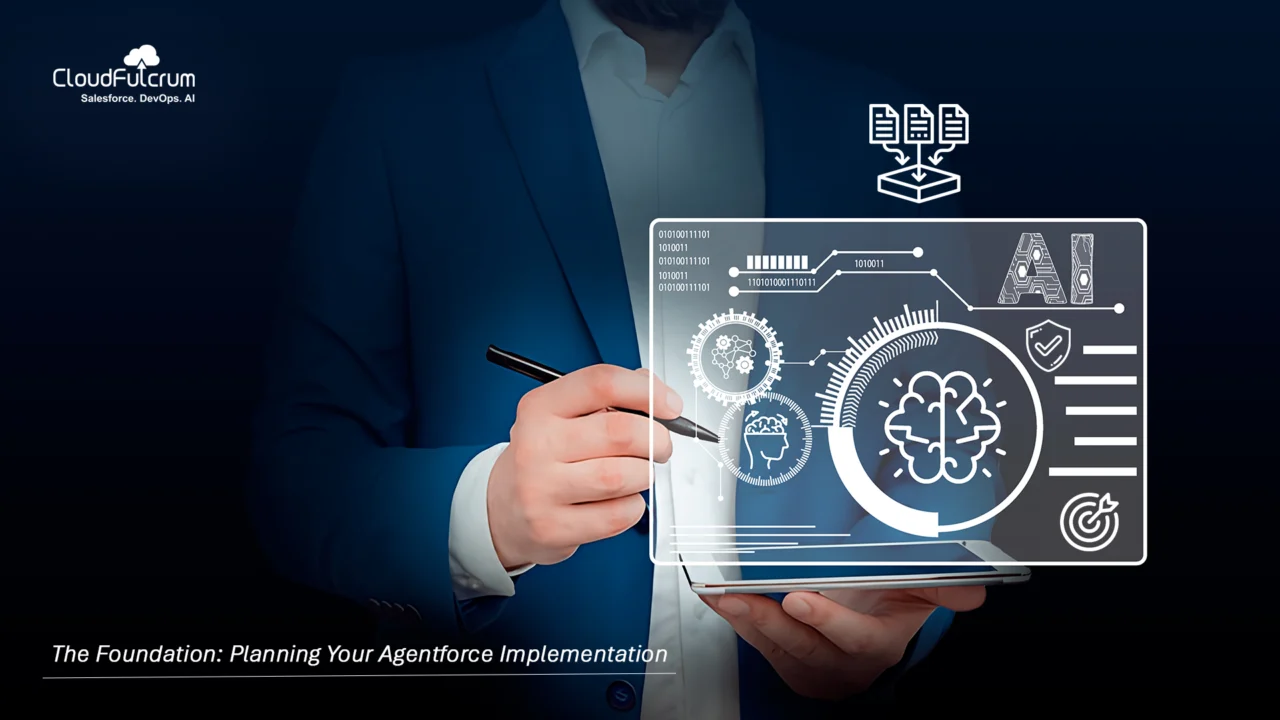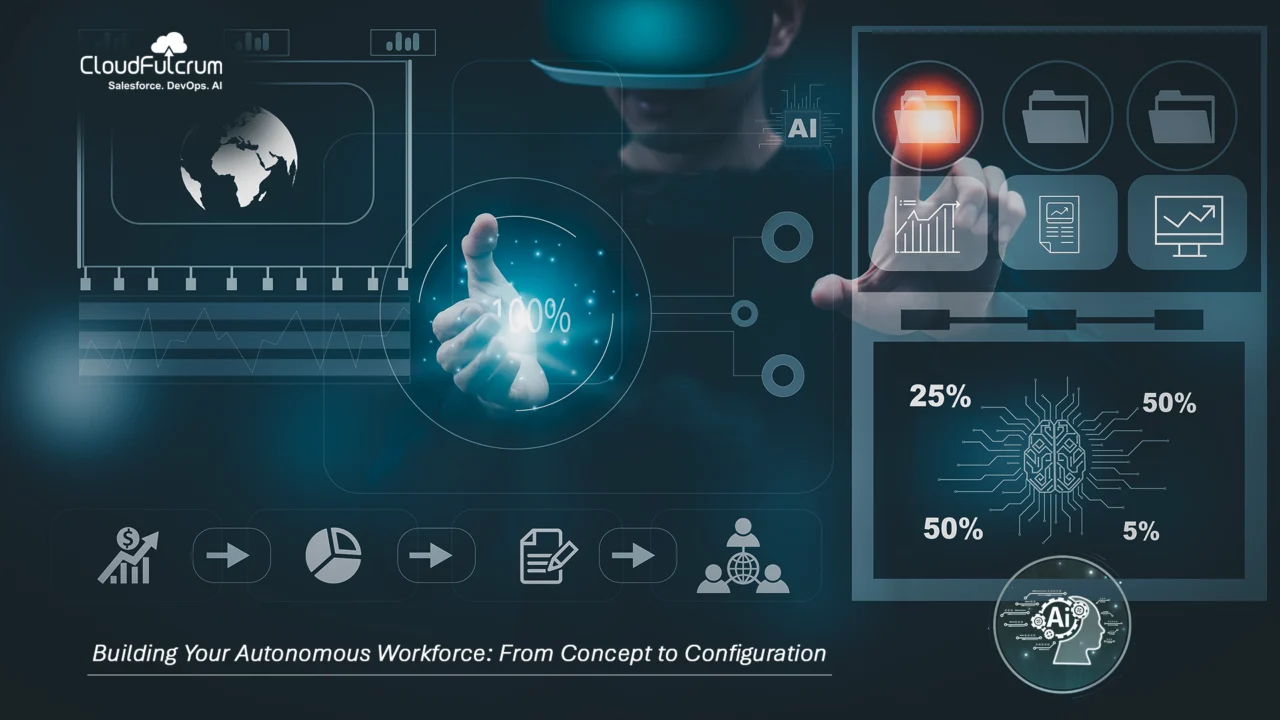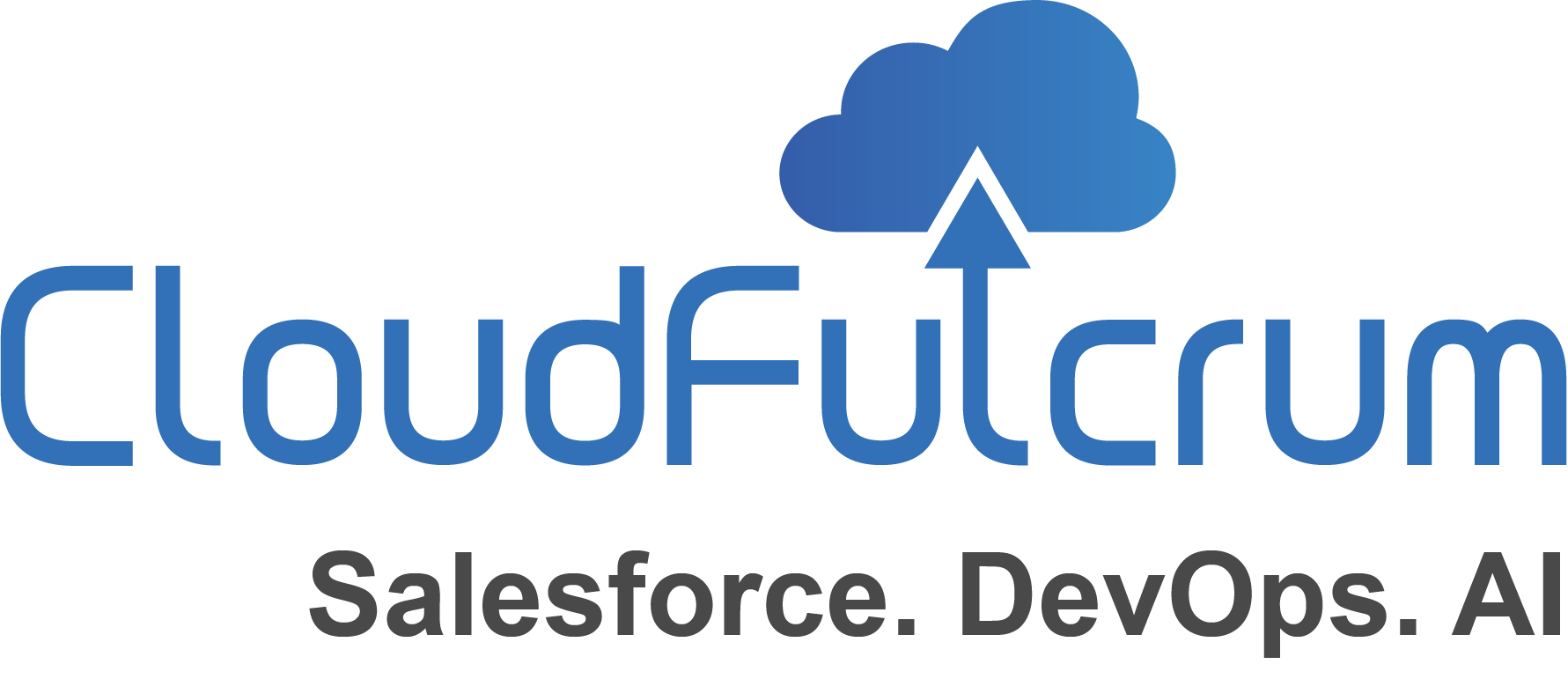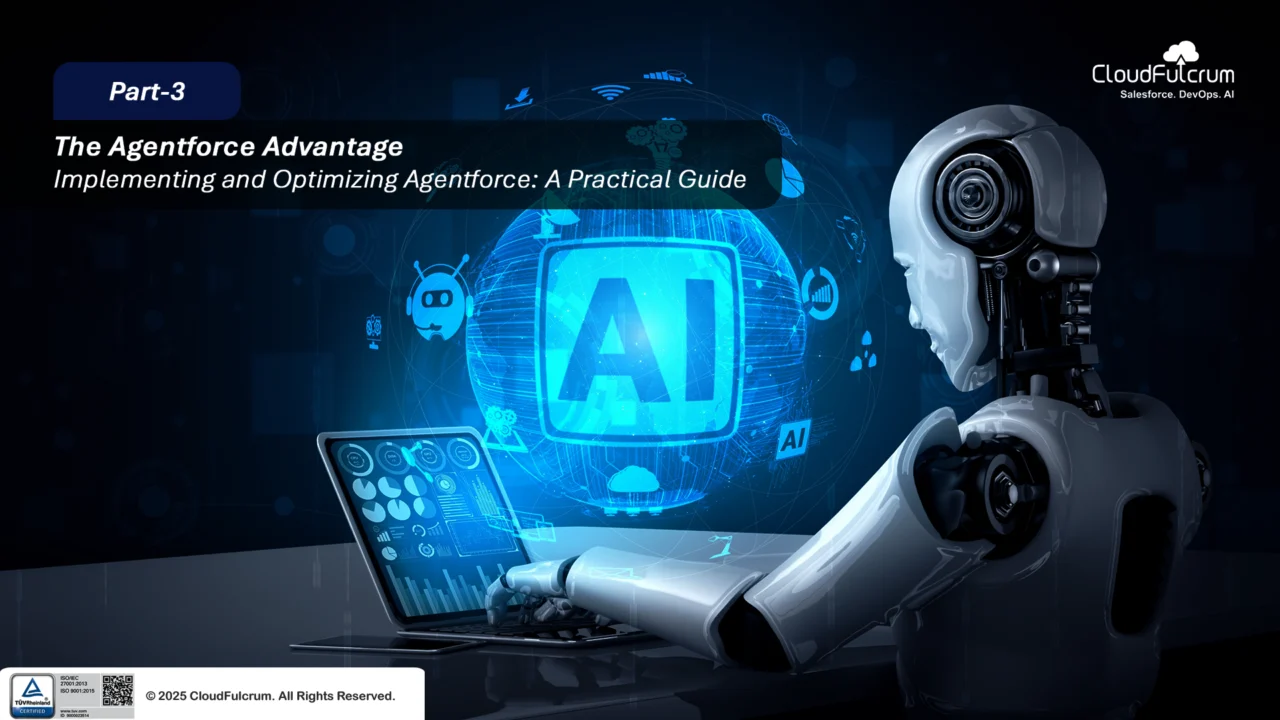In the first two posts of this series, we introduced Salesforce’s revolutionary Agentforce platform and explored its practical applications across Sales, Service, and Marketing. We’ve seen the potential for autonomous AI agents to transform business operations and enhance customer engagement. However, unlocking this potential requires more than just enabling the technology; it demands careful planning, precise implementation, and ongoing optimization.
This third installment provides a practical guide for businesses on how to effectively implement and optimize Agentforce, ensuring you maximize its value and achieve your desired outcomes.
The Foundation: Planning Your Agentforce Implementation
A successful Agentforce deployment begins with a solid plan. Skipping this crucial phase can lead to misaligned expectations and inefficient agents.
Revisit High-Impact Use Cases: Based on our discussion in Part 2, clearly define the specific business problems you want Agentforce to solve. Which tasks are most repetitive? Where are the biggest bottlenecks? Focusing on high-impact use cases ensures a tangible return on investment.
Define Agent Goals and Scope: For each identified use case, articulate the precise goals of the autonomous agent. What specific actions should it take? What information does it need to access? Clearly defining the scope prevents “scope creep” and ensures the agent is built with a clear purpose.
Assess Data Readiness and Integration Needs: Agentforce’s effectiveness is deeply tied to the data it can access. A critical step is assessing your data landscape. Is your data clean, accessible, and unified? Salesforce Data Cloud plays a pivotal role here, acting as the central source of truth that grounds Agentforce agents in rich, real-time business data. Identify which data sources (within Salesforce and potentially external systems) the agent will need to interact with and plan the necessary integrations.
Prioritize Security and Compliance: Security and compliance cannot be an afterthought. From the outset, consider data privacy regulations (like GDPR, HIPAA), internal security policies, and industry-specific requirements. Agentforce’s Einstein Trust Layer provides a crucial foundation, but you must configure it and implement additional organizational guardrails to ensure agents operate within defined ethical and legal boundaries.

Building Your Autonomous Workforce: From Concept to Configuration
With a solid plan in place, you can move to the building phase, where you translate your defined goals into configured AI agents.
Navigating the Agent Builder: This is your primary tool for bringing agents to life. Understand its interface and capabilities. You’ll be working with:
Skills: These are the fundamental actions your agent can perform (e.g., “retrieve customer history,” “create a case,” “send an email”). You can leverage pre-built skills or define custom ones using Salesforce’s powerful automation tools.
Flows: Salesforce Flows are essential for orchestrating complex agent actions. You can connect Agentforce skills to existing or new Flows to define multi-step processes that your agents will execute autonomously.
Prompt Templates: These define how your agent interacts with users and the language it uses. Crafting clear and effective prompt templates is crucial for guiding agent behavior and ensuring smooth interactions.
Apex: For highly customized or complex logic, developers can use Apex to extend Agentforce’s capabilities and build bespoke agent behaviors.
Leveraging Pre-built Agents vs. Building Custom: Salesforce offers pre-configured agents for common scenarios. Evaluate if these meet your needs. If not, or if you require highly specialized actions, utilize the Agent Builder to create custom agents. A hybrid approach, customizing pre-built agents, is also often effective.
Integrating with Your Ecosystem: Connect Agentforce to the necessary data sources and systems. This involves configuring access to Salesforce objects, leveraging Data Cloud for unified data, and potentially integrating with external applications through APIs to enable agents to perform actions beyond the Salesforce platform.

Deployment and Monitoring: Putting Agents to Work and Observing Performance
Once your agents are built and configured, a phased deployment and robust monitoring are essential.
Phased Rollout: Avoid a big bang deployment. Start with a pilot group or a specific, contained use case. This allows you to test agent performance in a live environment, gather feedback, and make necessary adjustments before a wider rollout.
Setting Up Monitoring and Analytics: Implement comprehensive monitoring to track agent activity and performance. Key metrics to watch include:
Task Completion Rate: How often are agents successfully completing their assigned tasks?
Resolution Time: For service agents, how quickly are they resolving customer issues?
User Feedback: Gather feedback from employees and customers interacting with the agents.
Error Rates: Monitor for instances where agents fail or produce incorrect outputs.
Establishing Feedback Loops: Create clear channels for users to provide feedback on agent performance. This feedback is invaluable for identifying areas for improvement and ensuring agents are meeting expectations.
Optimization and Governance: Ensuring Long-Term Agentforce Success
Implementing Agentforce is not a one-time project; it requires ongoing optimization and strong governance.
Techniques for Improving Agent Accuracy and Efficiency: Regularly review agent performance data. Refine prompt templates, update skills, and improve data access to enhance agent accuracy and efficiency over time.
Managing and Updating Agent Skills and Knowledge: As your business evolves, so too should your agents’ capabilities. Establish processes for updating agent skills, incorporating new knowledge, and adapting them to changing business needs.
Implementing Robust Governance Policies and Guardrails: Beyond the Einstein Trust Layer, define clear governance policies for agent deployment, usage, and monitoring. Establish customizable guardrails within Agentforce to control agent behavior in sensitive situations and ensure compliance.
Troubleshooting Common Issues: Be prepared to troubleshoot issues that may arise during deployment and ongoing operation. This could involve debugging Flows, verifying data access, or refining prompt logic.
The CloudFulcrum Advantage in Agentforce Implementation and Optimization
Implementing and optimizing a powerful platform like Agentforce can be complex. This is where CloudFulcrum’s expertise becomes invaluable. As experienced partners in Salesforce and cloud implementation, we can assist you with:
Strategic Planning: Helping you identify the highest-impact use cases and define clear agent goals.
Expert Implementation: Guiding you through the Agent Builder, integrating with Data Cloud and other systems, and ensuring a smooth deployment.
Customization and Development: Utilizing Flows, Prompt Templates, and Apex to build highly tailored agent solutions.
Security and Compliance: Implementing robust security measures and configuring guardrails to ensure compliant agent operations.
Monitoring and Optimization: Setting up effective monitoring, analyzing performance data, and providing recommendations for ongoing optimization.
Conclusion: Building a Capable and Compliant Autonomous Workforce
Implementing Agentforce is a strategic step towards building a more efficient, customer-centric, and innovative business. By following a structured approach to planning, building, deploying, and optimizing your autonomous AI agents, you can unlock the full potential of this revolutionary platform. With careful execution and the right expertise, you can build a capable and compliant autonomous workforce that drives significant value for your organization.
Stay tuned for the final post in our series, where we will look at the future of Agentforce and how it fits into the broader landscape of AI in the enterprise.

